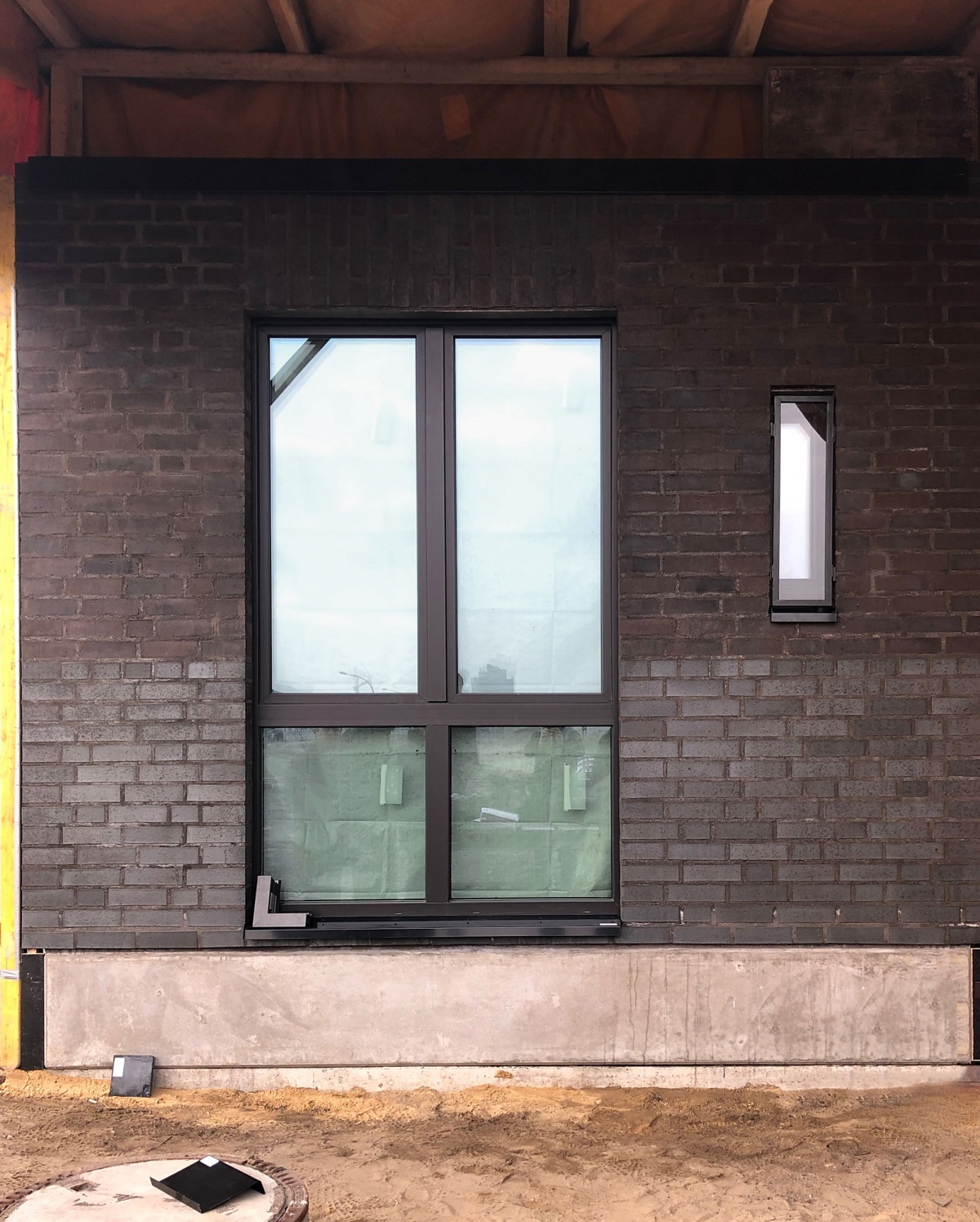2019
Best Buildings of 2019
December 2019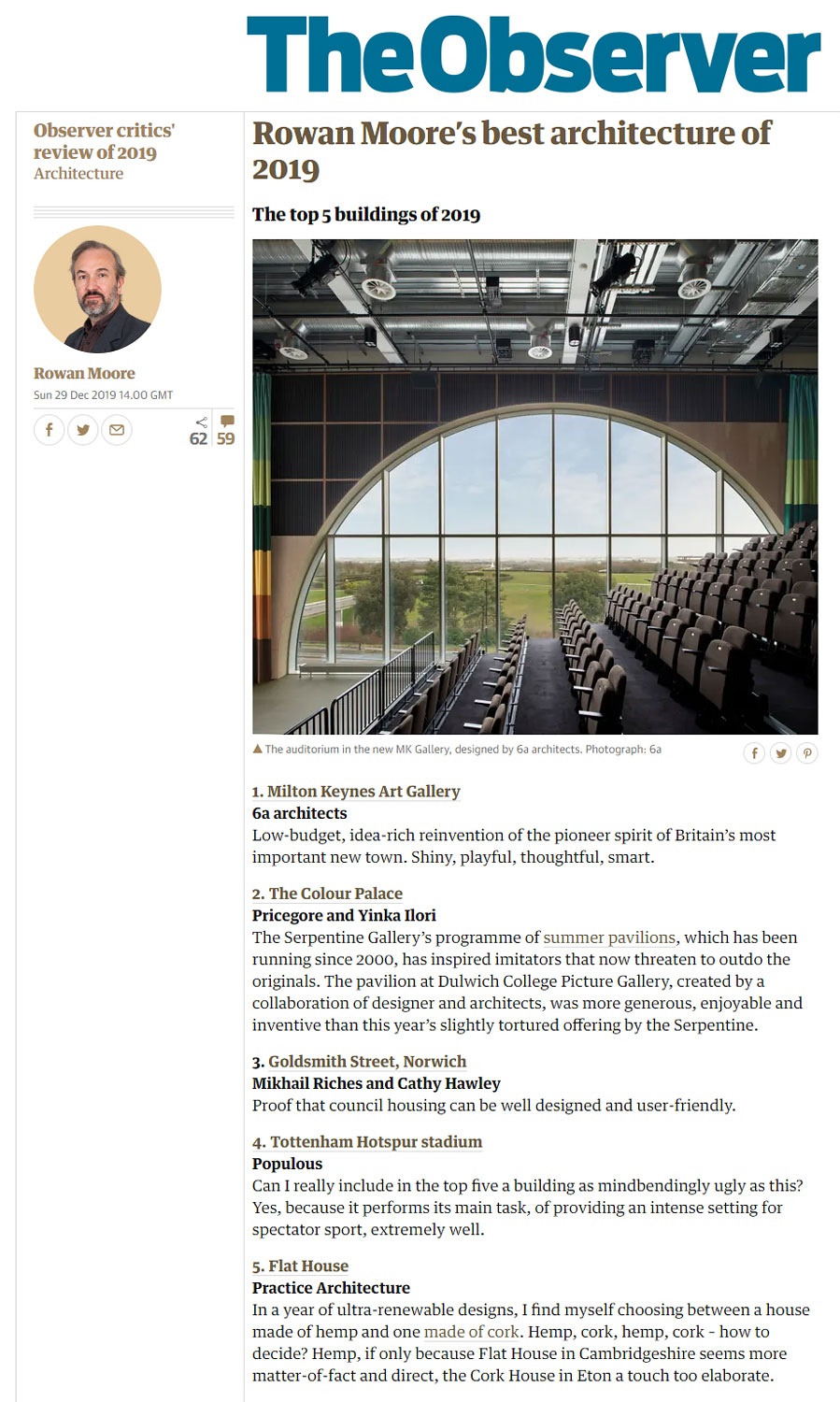
MK Gallery is selected by both Rowan Moore of The Observer and Oliver Wainwright of the The Guardian in the best buildings of 2019.
Beazley Design of the Year
September 2019
6a is delighted to announce that mk Gallery featuring City Club by artists Gareth Jones and Nils Norman has been nominated for the Beazley Design of the Year 2019. The project will be exhibited at the Design Museum from 11 September 2019 until 9 February 2020.
Now in its twelfth year, Beazley Designs of the Year is an annual celebration of the most original and exciting products, concepts and designers across the globe today. Nominators were asked to select their favourite designs that inspire, represent change in their field and capture this moment in time.
Alongside mk Gallery is a nomination for A Pavilion for Archaeologists and Kids in Pachacamac in Peru designed and constructed by students of 6a director Tom Emerson from the Department of Architecture, etc Zurich in collaboration with Taller 5 Juillerat/Manrique, FAU, PUCP in Lima.
riba National Award

South London Gallery Fire Station has won a riba National Award 2019. 6a opened a major new expansion of the gallery in September 2018. The conversion of a Victorian former fire station added exhibition spaces, a local archive, communal kitchen and education space as an annexe to the original gallery buildings.
6a wins two riba London Awards

South London Gallery Fire Station and Blue Mountain School win riba London Awards 2019
Off Grid
May 2019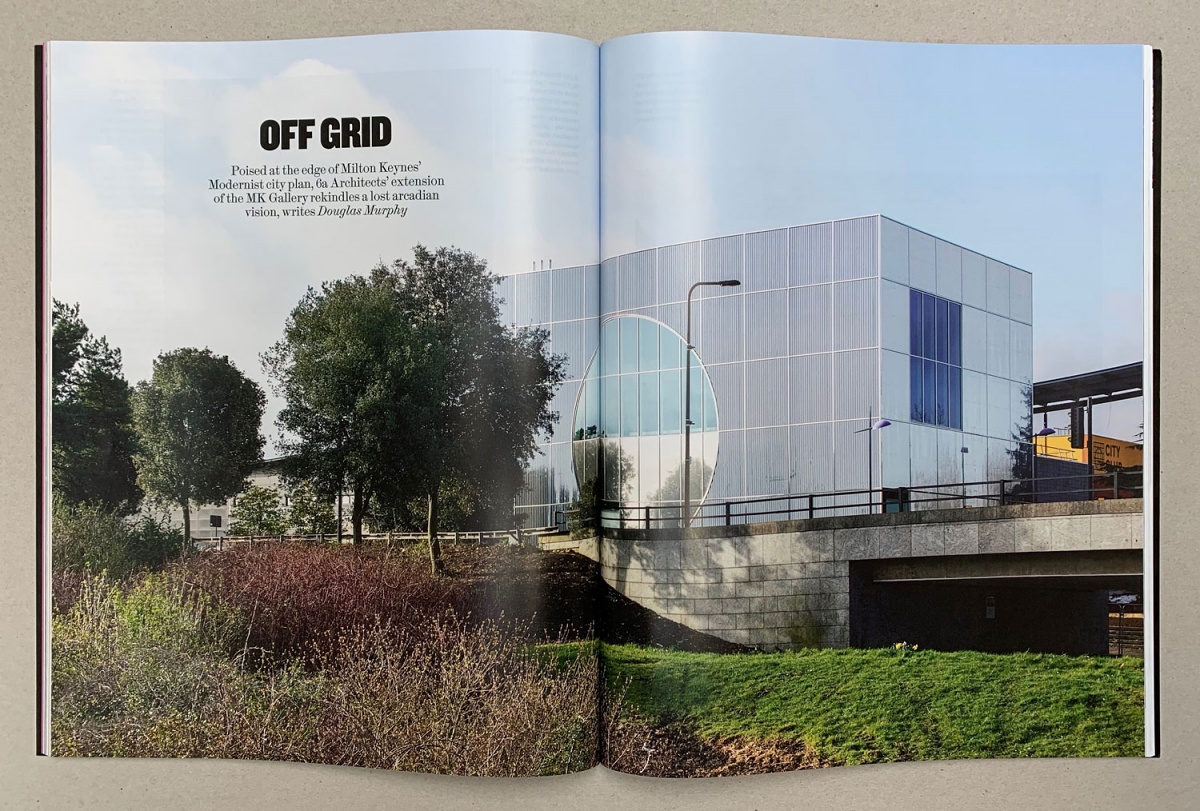
Douglas Murphy reviews mk Gallery in the Architectural Review, May 2019
Playing with History
May 2019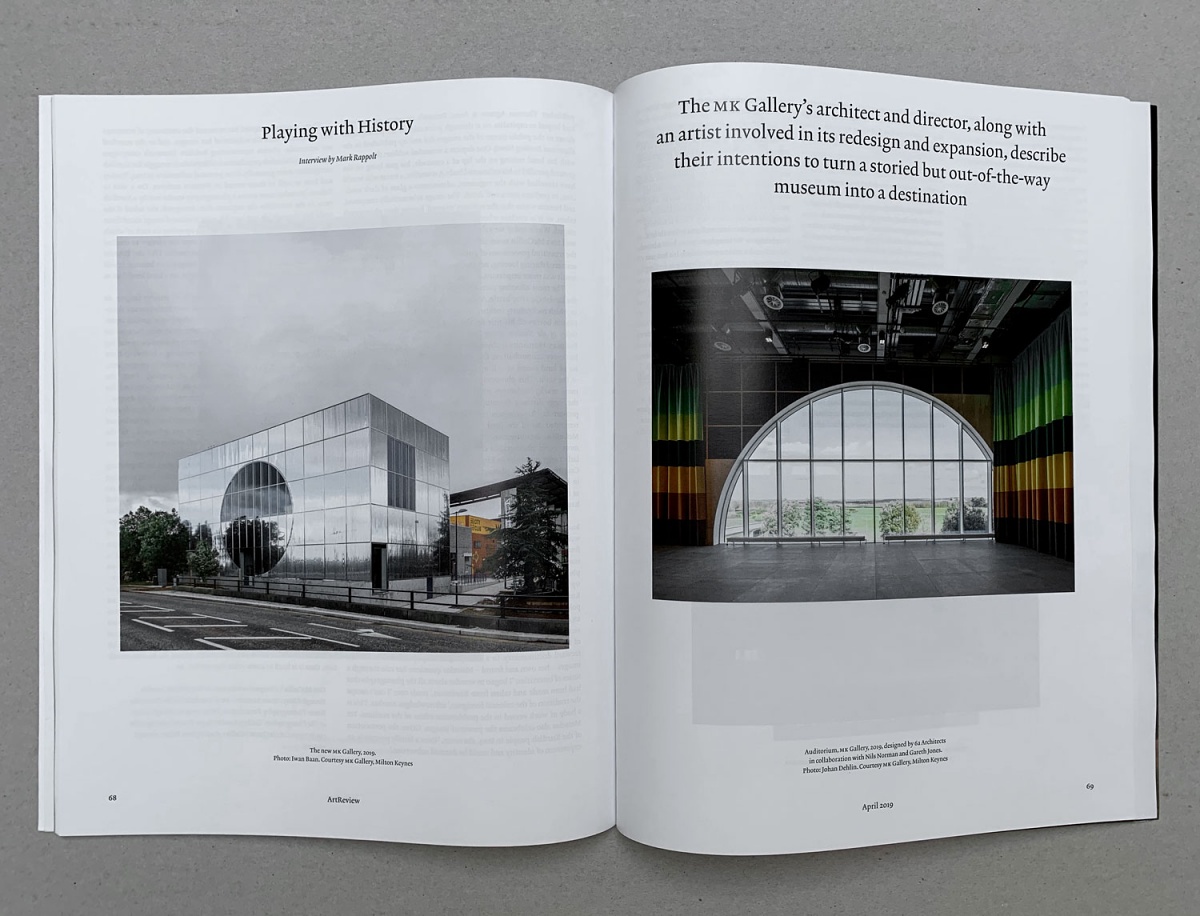
Art Review editor Mark Rappolt discusses the collaborations at the heart of the new mk Gallery with 6a director Tom Emerson, artists Nils Norma and Gareth Jones and mk Gallery director Anthony Spira.
Cover stories: AD 1974, AJ 2019
April 2019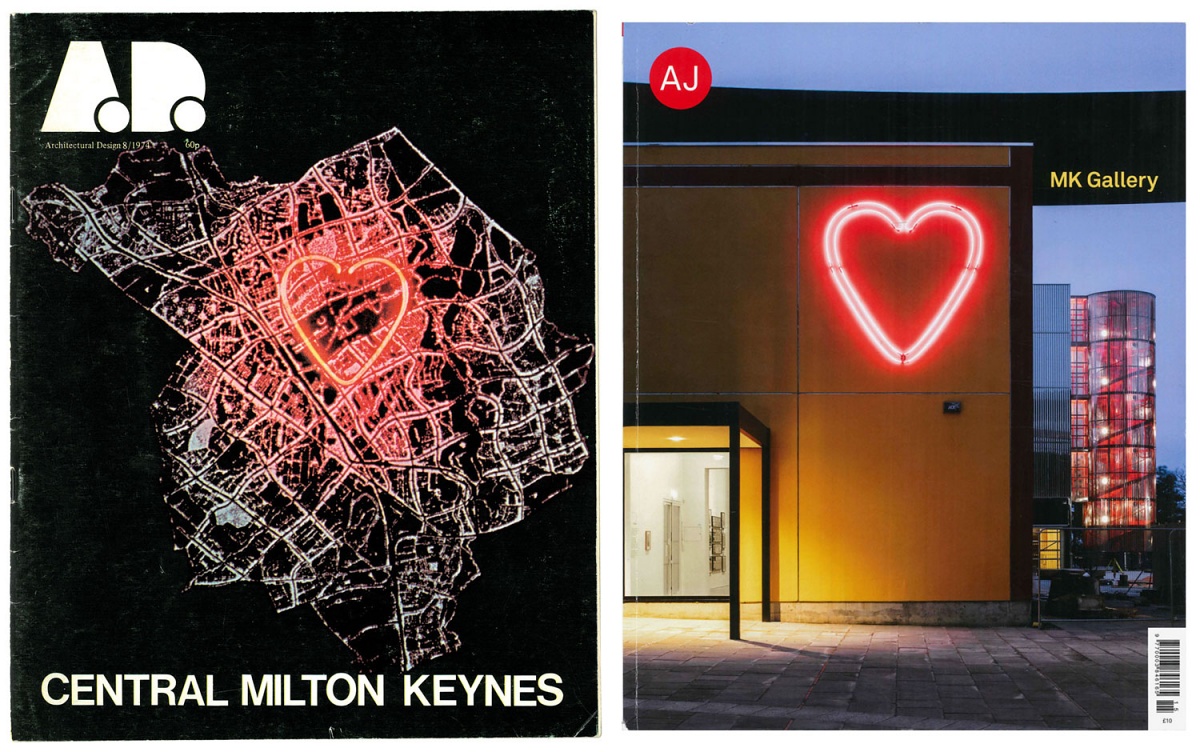
The famous 1974 cover of AD Magazine featuring the neon heart over the plan of Milton Keynes was reused over the entrance of the new mk Gallery in City Club by artists Gareth Jones and Nils Norman in collaboration with 6a. The image by Johan Dehlin has now returned to the cover of the Architects' Journal, April 2019. Fran Williams reviews the project.
Mirror to Milton Keynes
Architecture Today 297
April 2019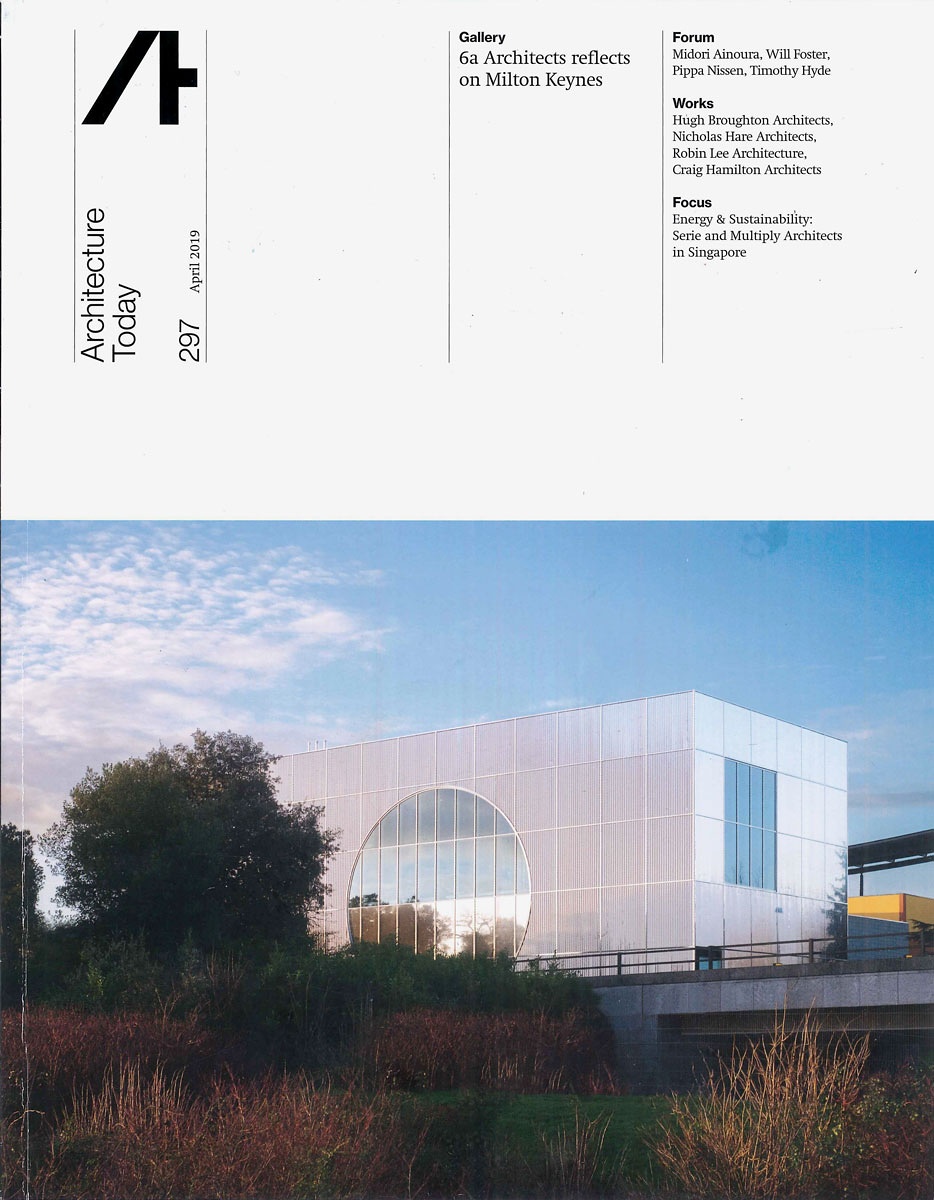
"Under the directorship of Anthony Spira, the Milton Keynes Gallery has reimagined itself as a kind of twenty-first-century leisure centre, where culture acts as a catalyst and frame for art, yes, but also social and community activities. In the hands of architect 6a working with artists Gareth Jones and Nils Norman, the project became something rooted in place, expansive in its outlook and engaging in its form."
Sam Jacob reviews the new mk Gallery in Architecture Today
Is This Tomorrow?
Icon Magazine
April 2019"The show opens with one of the most successful gambits, 6a Architects and Amalia Pica's installation Enclosure (2019), which investigates the ways in which humans circumscribe the lives of animals."
Exhibition review of Is This Tomorrow? at the Whitechapel Gallery. Runs until 12 May.
Going back to plan A
The riba Journal
April 2019
"With the parkland beyond, I can imagine the semicircular window being left uncovered at dusk for a rural version of Manhattan's Jazz at Lincoln Centre."
Hugh Pearman reviews the new mk Gallery in the riba Journal
Studio Jürgen Teller Londra
Casabella 895
March 2019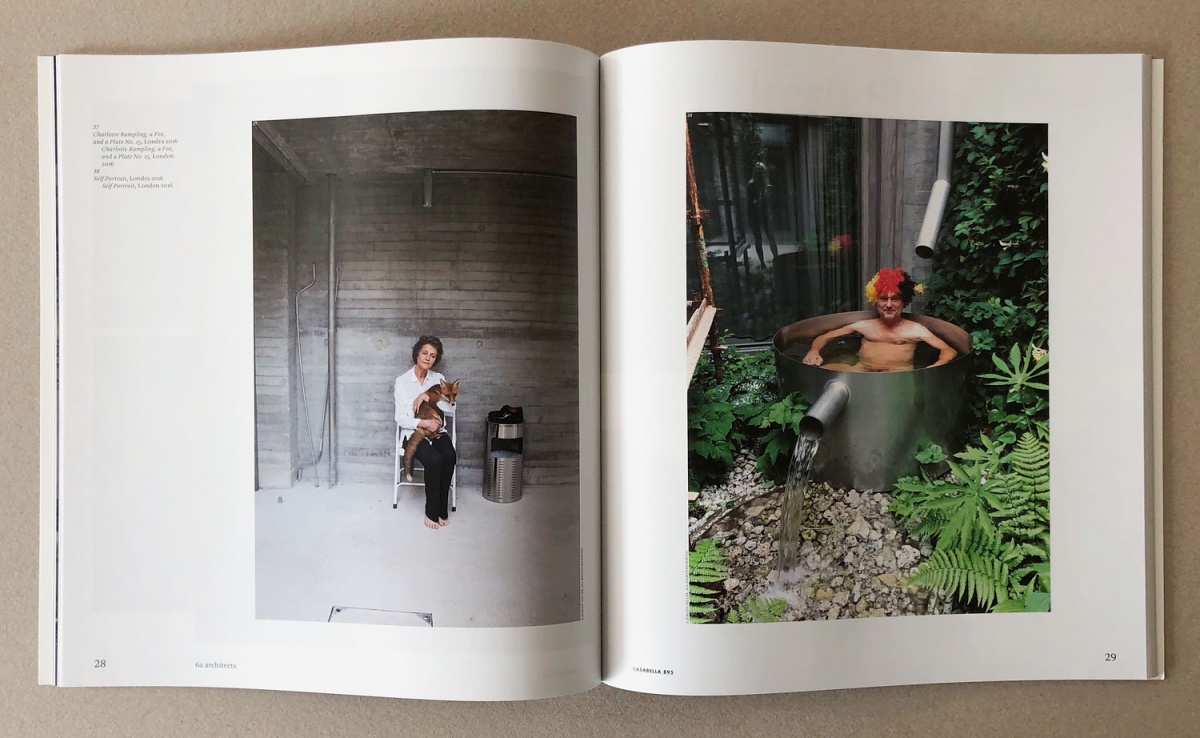
Federico Tranfa compares 6a's studio for Juergen Teller to RSR Fitter's London's Natural History (1945). The articles includes comprehensive photographs of the studio, large scale drawings and photographs by Juergen Teller taken in the studio.
Photos by Juergen Teller
The Lie of the Land
mk Gallery
March 2019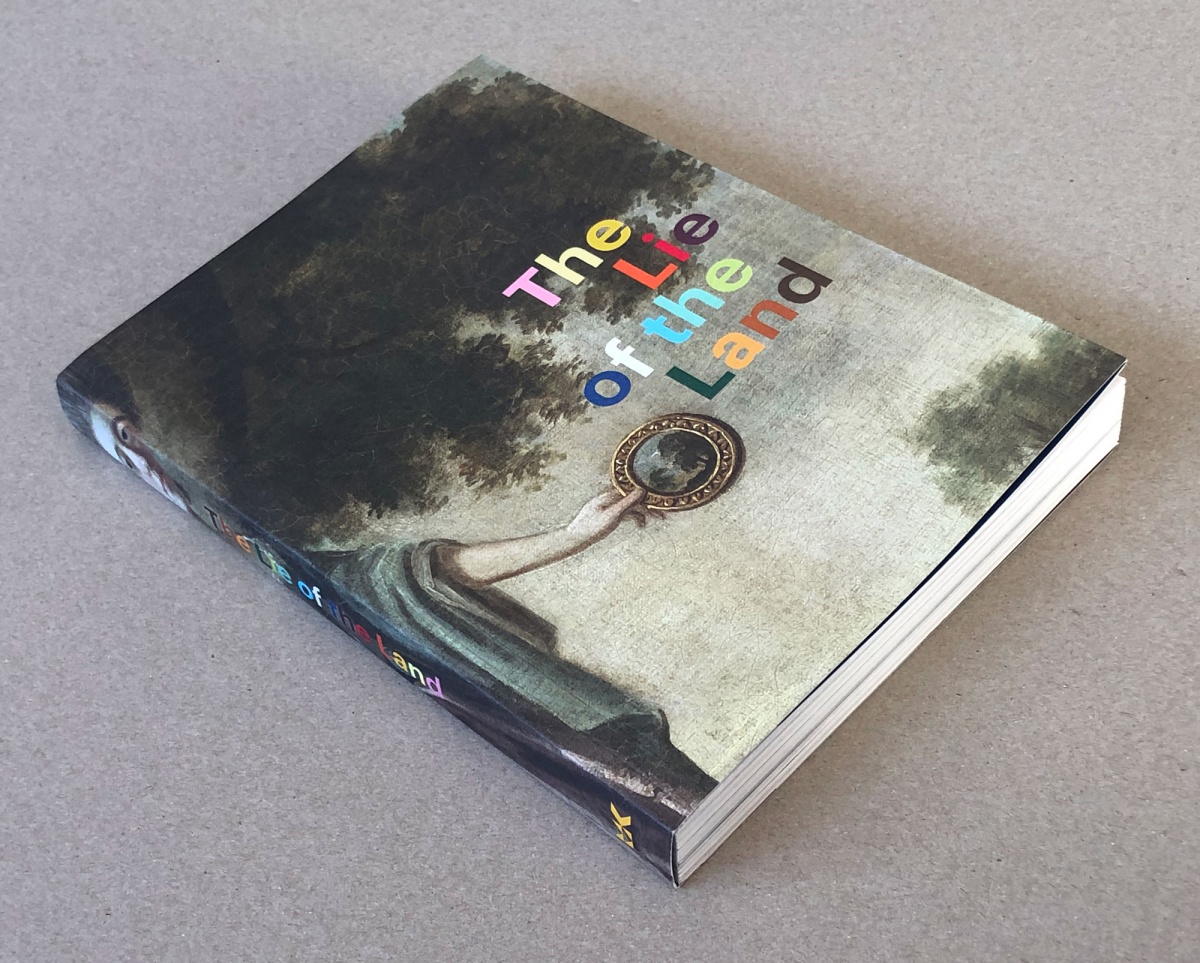
The catalogue of the new mk Gallery opening exhibition has been published featuring works by 85 artists and essays by Fay Blanchard, Tom Emerson, Jes Fernie, Cora Gilroy-Ware and Paul Gilroy, Owen Hatherley, Sam Jacob, Gareth Jones, Jane Rendell, Anthony Spira and Claire Louise Staunton.
Through a playful and provocative display The Lie of the Land charts how British landscape was radically transformed by changes in free time and leisure activities since hunting and shooting, the recreations of the aristocracy, were enjoyed on the rolling hills of their private estates. In part, tracing a line between Capability Brown’s aristocratic gardens at Stowe and the social, urban experiment at neighbouring Milton Keynes, the exhibition teases out the aspirations that underpin our built environments.
The Lie of the Land examines the modernisation of leisure propelled by industrialisation, a theme developed from Canaletto’s painting of the fashionable public entertainment venue, Vauxhall Pleasure Gardens. The Victorian era, with its social reforms aiming to improve urban living conditions, is represented by the Parks Movement. Alongside works by early science fiction writer Jane Loudon and the founder of the Garden City Movement Ebenezer Howard, the exhibition also includes the first-ever lawnmower, John Ruskin’s rock collection and influential horticulturalist Gertrude Jekyll’s gardening boots.
From the late-18th century, large-scale public spectacles became hugely popular as a result of technical advances. Hot air ballooning, horse racing and concerts heralded the commodification of leisure. By contrast, grassroots-initiated activity such as raves, carnivals and urban sports are traced in the work of, for example, Jeremy Deller and Errol Lloyd and use of public spaces for protest are explored, including the Greenham Common Women’s Peace Camp occupation.
As the 20th century progressed, in Milton Keynes, chief architect Derek Walker proposed a city greener than the surrounding countryside where cars, electronic communication and nature reinvented the idea of the town-country for the 1970s. Radical urban theory was to be combined with the LA lifestyle and the thrill of pop culture – also reflected in the art of Richard Hamilton and Eduardo Paolozzi.
The Lie of the Land highlights campaigns to democratise space, from the 17th century egalitarian Levellers to the 1930s Ramblers. We look at how people use public space, and the communities that have been excluded through structures of race, gender, disability and class, explored in works by artists including Jo Spence, Rose Finn-Kelcey and Ingrid Pollard. Overall, the exhibition aims to capture a visionary spirit of grand designs tempered by the realities of political expediency. Public resources are under increasing pressure and ‘placemaking’ and ‘regeneration’ remain central to urban development. The Lie of the Land looks reflexively at the role of culture in this process, drawing inspiration and seeking lessons from the past.
Curatorial team:
Sam Jacob, Anthony Spira, Claire Louise Staunton, Fay Blanchard with Tom Emerson, Gareth Jones and Niall Hobhouse.
The exhibition was made possible with support from the Graham Foundation for Advanced Studies in the Fine Arts and a Jonathan Ruffer Curatorial Research Grant from Art Fund.
A building that makes Milton Keynes exciting all over again
The Daily Telegraph
March 2019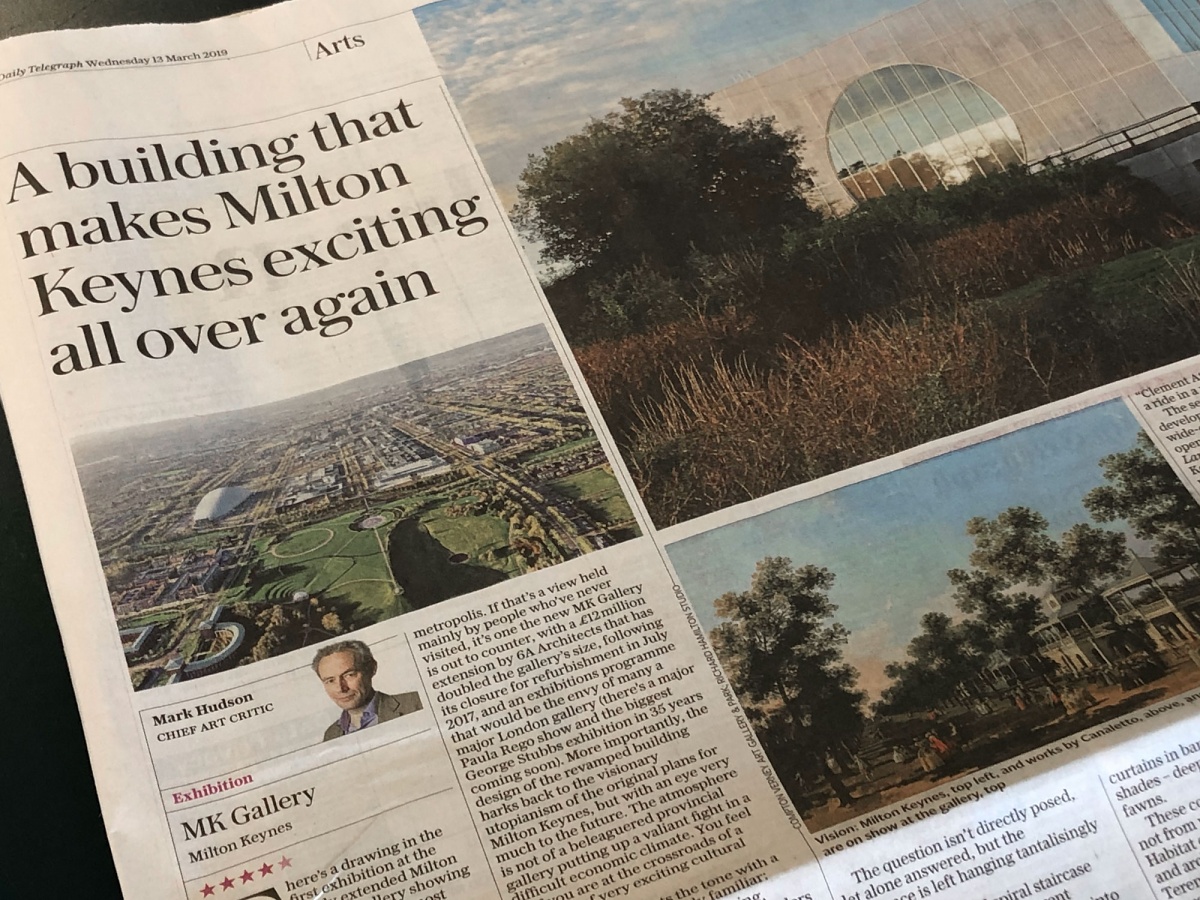
Two separate reviews of the new mk Gallery are published in The Daily Telegraph.
Design critic Caroline Roux's article Is it time to think again about Milton Keynes? Why the new MK Gallery is an architectural gem is in the luxury section.
Art critic Mark Hudson gives the building and the opening exhibition, The Lie of the Land, four stars.
BBC Look East news
March 2019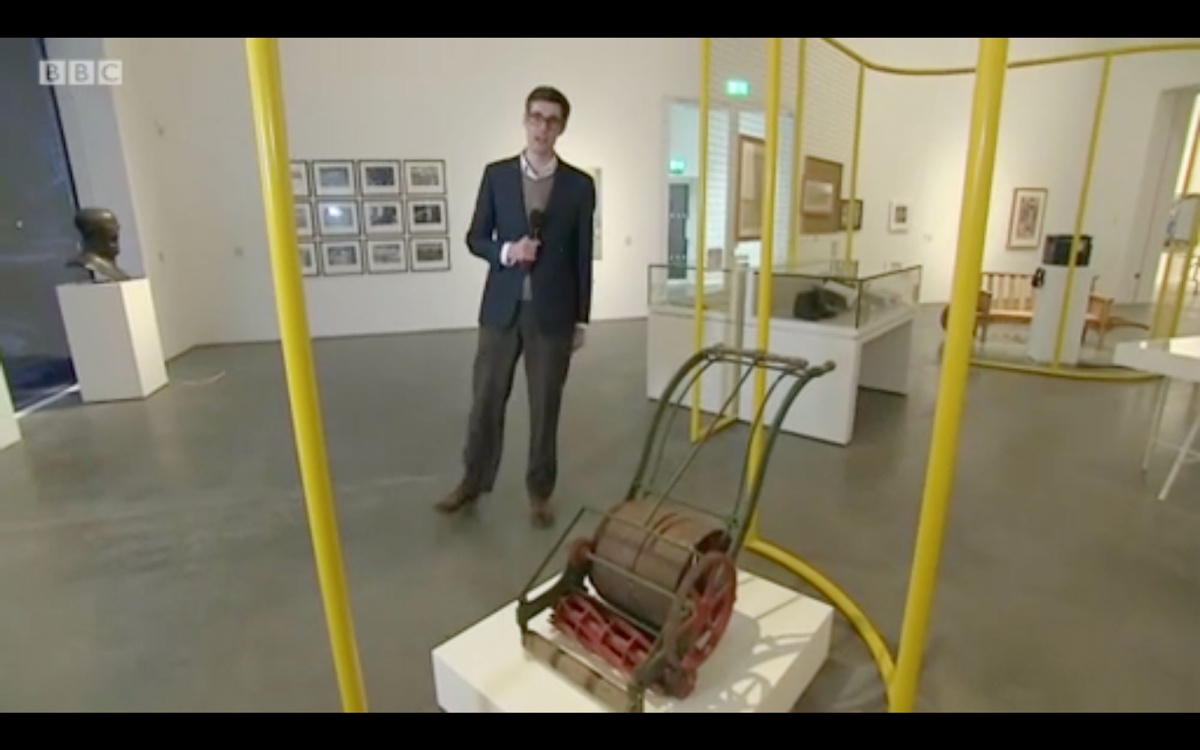
Ben Schofield reports from mk Gallery for bbc news Look East
Hope and Faith in Retro Colours
The Observer
March 2019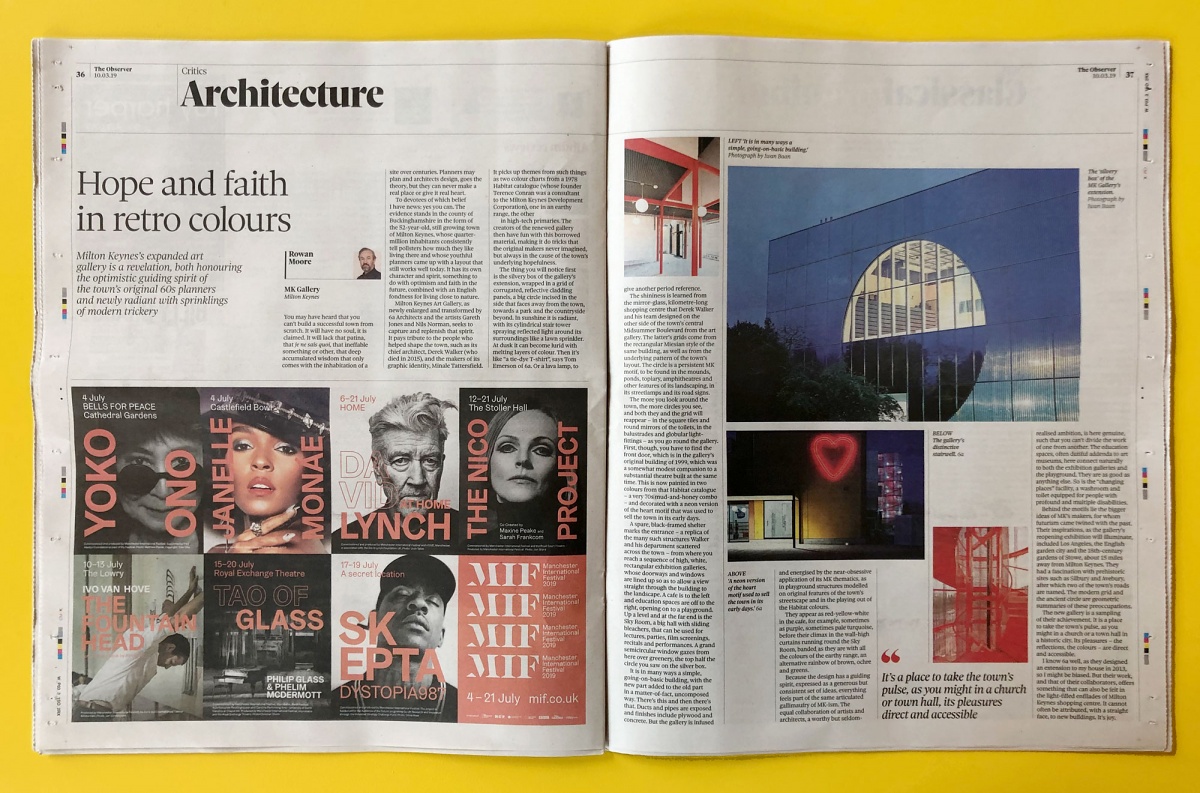
Rowan Moore reviews the new mk Gallery in The Observer
[6a’s] work, and that of their collaborators, (it seems to me) offers something that can also be felt in the light-filled enfilades of Milton Keynes shopping centre. It cannot often be attributed, with a straight face, to new buildings. It’s joy.
utterly, thrillingly Milton Keynesian
The Guardian
March 2019
Living on the Grid
March 2019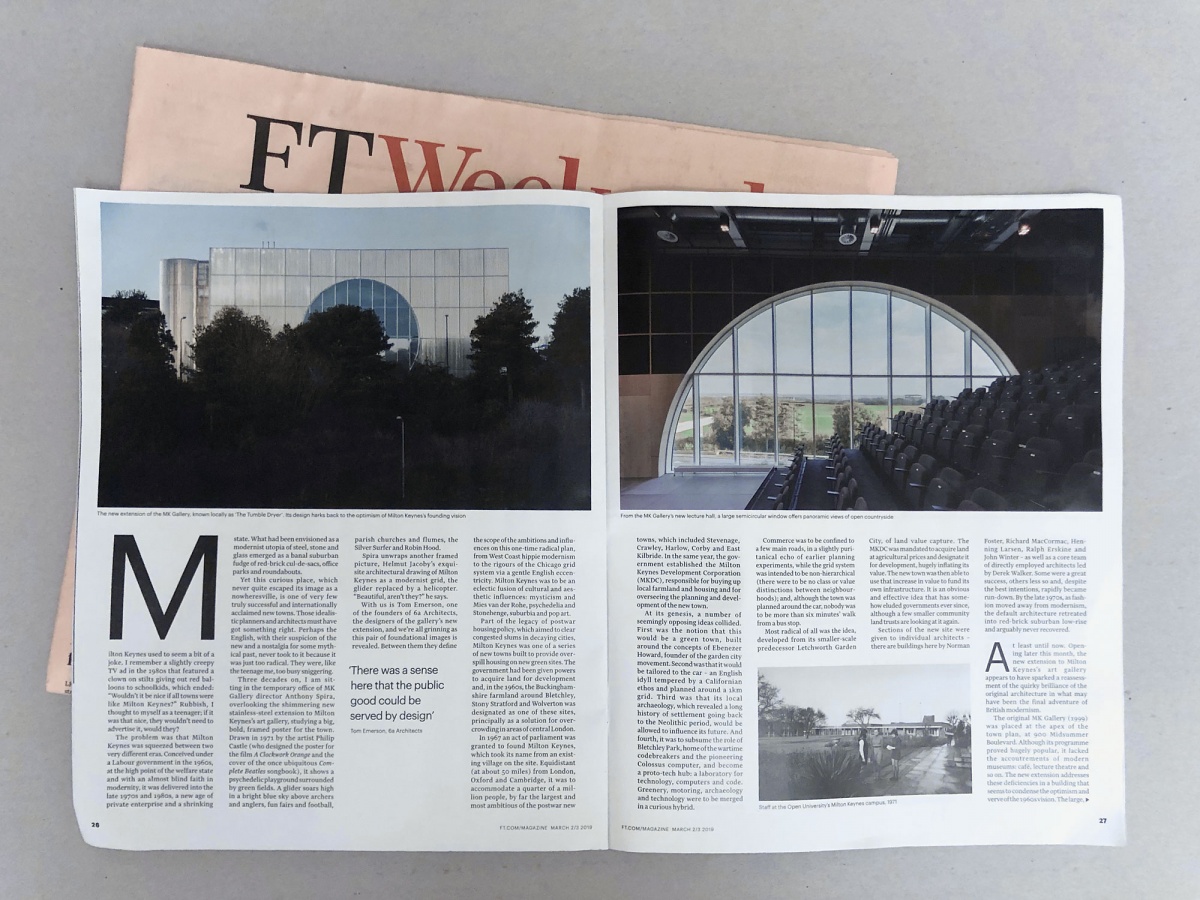
The shiny new MK Gallery, poised between the rural and the urban, the past, the pastoral and the future, between high technology and low-rise suburbia, embodies something of that original idealism and the sophistication of an architecture that now seems almost impossibly distant. It is a shimmering latter-day reflection of a mighty ambition.
Edwin Heathcote writes on Milton Keynes on the new MK Gallery on the Financial Times, 2 March 2019.
Aberturas / Openings
March 2019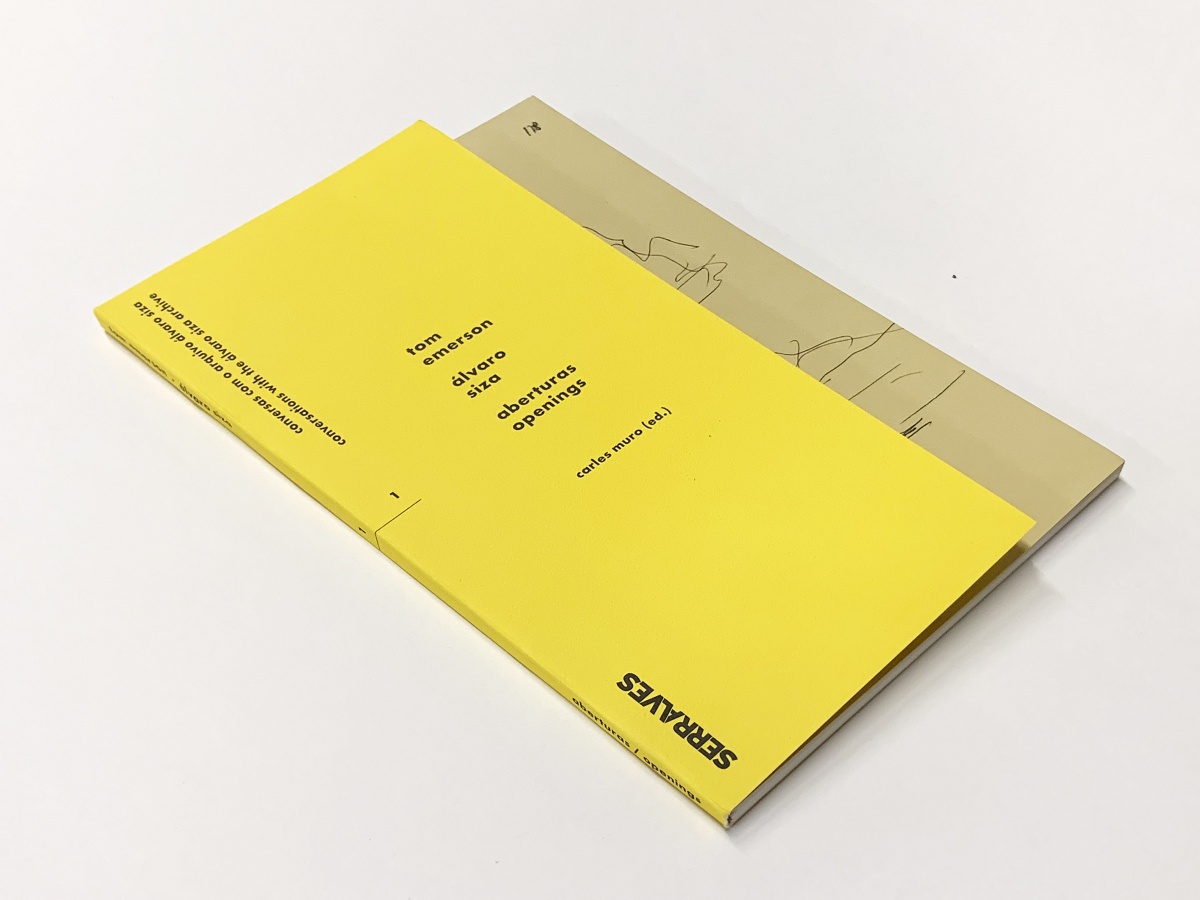
The catalogues to the exhibition Aberturas/Openings, conversations with the Álvaro Siza Archive has been published by the Serralves Museum. The catalogues includes reproductions of selected drawings by Siza from the exhibition and essays by Tom Emerson and Alvaro Siza.
Is This Tomorrow?
February 2019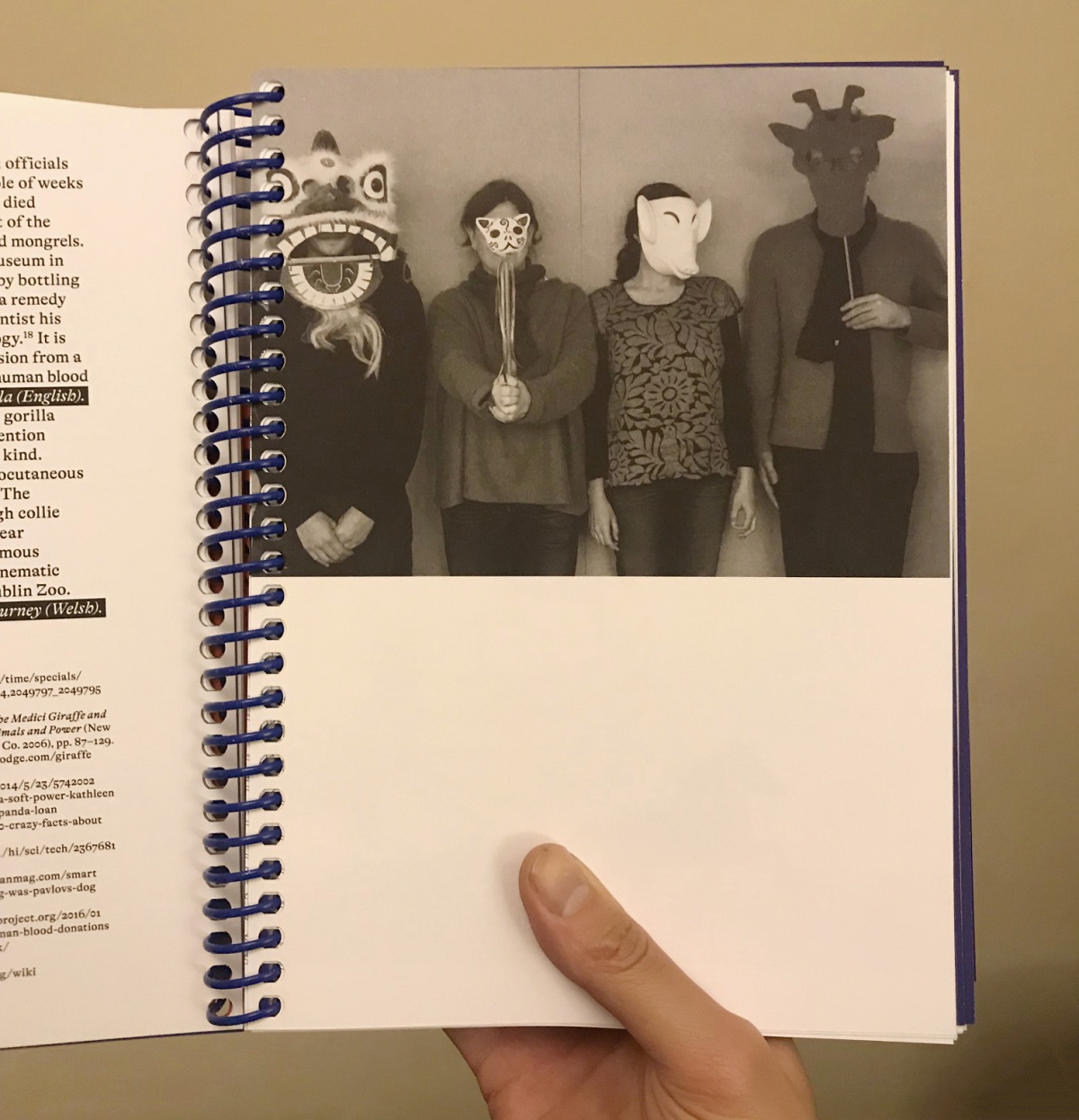
Is This Tomorrow? takes as its model Whitechapel Gallery’s landmark exhibition This Is Tomorrow (1956), which featured 37 British architects, painters and sculptors – including Richard Hamilton, Eduardo Paolozzi and Alison and Peter Smithson – working collaboratively in small groups.
6a has collaborated with artist Amalia Pica to produce Enclosure, an installation made from objects designed to corral, entertain and care for animals. Enclosure aims to create a playful installation addressed beyond human horizons towards the multiplicity of life that makes our collective environment.
In an era when humanity is facing new challenges posed by big data, bioengineering and climate change, Whitechapel Gallery has invited ten groups of artists and architects to explore the potential of collaboration and offer their visions of the future. They imagine scenarios in which queer desire, house music and fracking meet on a mountainside; grief and microbes generate new possibilities for housing; or machines dispense objects and emotions to support our place in the technological world of tomorrow.
Rowan Moore, The Oberserver, 17 February 2019
Whitechapel Gallery until 12 May
